Research
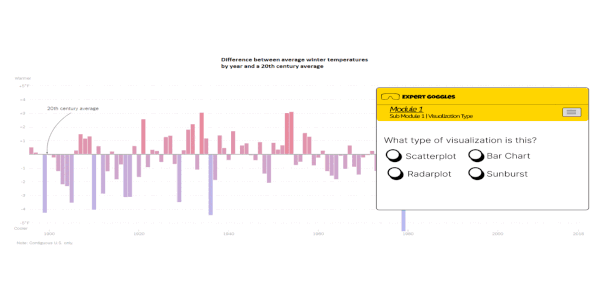
Expert Goggles
This research project introduces the Learner Driven Approach, previously known as Expert Goggles, as a solution to address the challenge of interpreting complex data visualizations online. Not everyone possesses the necessary data literacy skills to effectively understand these visualizations. The approach offers just-in-time guidance to assist non-experts in interpreting web-based visualizations, aiming to transform everyday experiences into informal learning opportunities. The project explores different expert processes for automatically detecting the context and providing timely support. It also involves comparing various methods of delivering just-in-time learning opportunities to students. The Expert Goggles tool is highlighted as a tool that provides interactive guidance and multiple interactions to aid in the interpretation of data visualizations.
Demo of Expert-Goggles (EG) prototype tools.
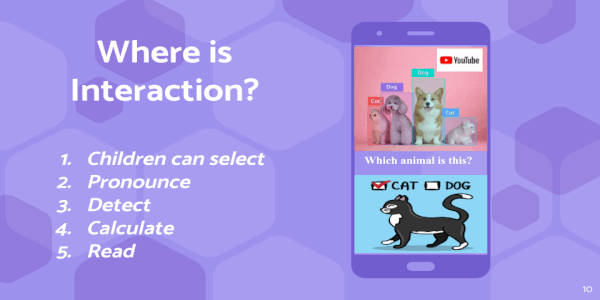
PiggyBack Learning
For young children, educational programming is an opportunity to engage with learning concepts in fun and entertaining ways. In the US, the Federal Communications Commission enforces cable providers to reserve X time for educational materials; however, no such restrictions exist on popular platforms like YouTube or TikTok. . We introduce the concept of “Piggyback Learning” which creates educational materials on top of existing non-educational content. Our system XXX will extract content such as subtitles and objects of interest from videos to construct comprehension quizzes and other learning activities automatically. Primarily, PBL focuses on extracting different objects, behaviors, words, and basic maths to correlate with real-life context by creating different interactive learning materials.
AI Reception
Artificial Intelligence enabled automated reception to perform as a human receptionist to avoid face-to-face interaction among mass people regarding their daily service in the current pandemic. Inspired by their current problem of mass congestion, our proposed AI-based Smart Reception can authenticate users and interact in Bangla language with humans by responding to university-domain-related queries, resulting in better business service and outcomes. We used OpenFace face recognition for authentication, having an accuracy of 92.92% with 1×10−5 second training time for a new image by saving the image dataset as a collection of an array file. The Interaction Recognition system consists of three modules: Automatic Speech Recognition (ASR), Interactive Agent, and Text-to-Speech (TTS) Synthesis. We used the OpenSLR- Large Bengali ASR Training Data to train the Deep Speech 2 model for ASR with a Word Error Rate (WER) of 42.15%. We tested our developed database management architecture for the Interaction Recognition system with the three-step evaluation using BERT sentence transformer (paraphrase-mpnet-base-v2) that provided satisfactory responses with 92% accuracy, increasing the receptionist performance significantly. TTS module relays on WavNet gTTS model. Our research also demonstrated that a developed AI-based system could be an adaptive solution for any domain-specific reception system responsible for systematic and efficient customer service offline and online.
Demo of Expert-Goggles (EG) prototype tools.
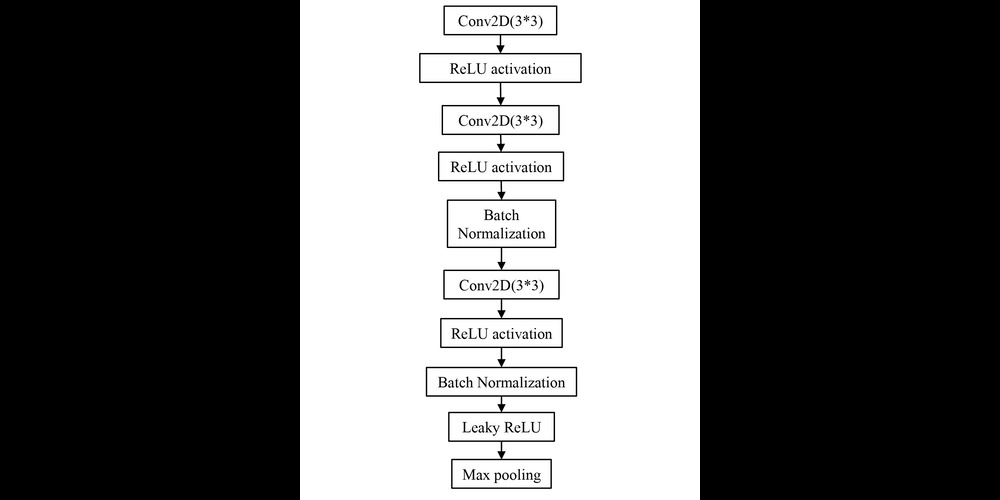
Osteosarcoma Tumor Detection
Osteosarcoma is an osseous tumor that occurs in the metaphyseal area around the knee accounts for roughly 20% of bone cancers mostly affects patients younger than 20 years. Early diagnosis of osteosarcoma cancer can pave the way for an unlimited choice of therapy opportunities. Moreover, pathological estimation of necrosis and tumor cells determines the future intensity of chemotherapy radiation to apply to patient. The biopsy confirms the diagnosis and divulges the grade of the tumor, necrotic, and non-tumor cells. Due to a lack of radiologists in third world countries like Bangladesh, it is extremely difficult to diagnose cancer in the early stage. Moreover, to identify the chemotherapy effect during the chemotherapy period, multiple radiologists are required which is quite expensive for most cancer hospitals. In this paper, a Sequential Recurrent Convolutional Neural Network (RCNN) model consisting of CNN and bidirectional Gated Recurrent Units (GRU) is proposed, which performs exceptionally well with small numbers of histopathological osteosarcoma Haematoxylin and Eosin (H & E) stained images despite having the over-fitting problem, heterogeneity, intra-class variation, inter-class similarity, crowded context, the irregular shape of the nucleus and noisy data. Performance of the is compared with that of AlexNet, ResNet50, VGG16, LeNet and SVM models with the histopathological image dataset on osteosarcoma.
Projects

Understanding Community Interaction in Online Group POSTs: Enhancing Moderation Efficiency
Graph theory, a fundamental principle of network theory, provides an explanation for community interaction among various groups online. These online social media groups create network structures consisting of nodes and edges to promote community interaction, networking, support, advocacy, branding, and information sharing. Effective moderation is crucial to discourage inappropriate behavior such as harassment and spamming, promote respectful discourse and diverse perspectives, and prevent the dissemination of harmful or misleading rumors and false information. However, moderation of a large number of posts and comments is time- consuming and requires significant effort from administrators and moderators, who must understand the context of each post. Additionally, token-based semantic moderation techniques may mistakenly remove or mute users without considering the context and relationships among users. In this study, we have identified key features, including structural, statistical, and community features that indicate community interaction conflicts in online group posts. To address these behavioral patterns, we have proposed a network science theory called “Unbalanced Structure Theory on Directed Multi Edge Weight Graph” for moderating conflict and toxic behavior in online communities. We also proposed the concept of “community interaction entropy,” which calculates community sentiment based on interaction and modifies the node centrality of different communities to determine overall conflicts. Finally, we evaluated the “Unbalanced Structure Theory on Directed Multi Edge Weight Graph” on specific Facebook group posts.
Hit the Rabbit Game
“Hit the Rabbit” was a project I worked on during my undergraduate studies in the Digital Logic Design (DLD) lab. The project involved constructing a game using basic integrated circuits (ICs). The objective of the game was to hit the blinking LED with a switch to earn points. If a player missed or pressed the wrong blinking light, their score would be deducted. To implement the game, we utilized various components such as a random number generator, pulse generator, one-hot decoder, NOR gates, addition blocks, buffer circuit, point subtraction and calculation block, decoder, and seven-segment displays. These components were combined to create the entire system for the game.
Demo of Hit the Rabbit Game with Basic ICs.
Contextual Visual Reasoning Approach for Visually Impaired People
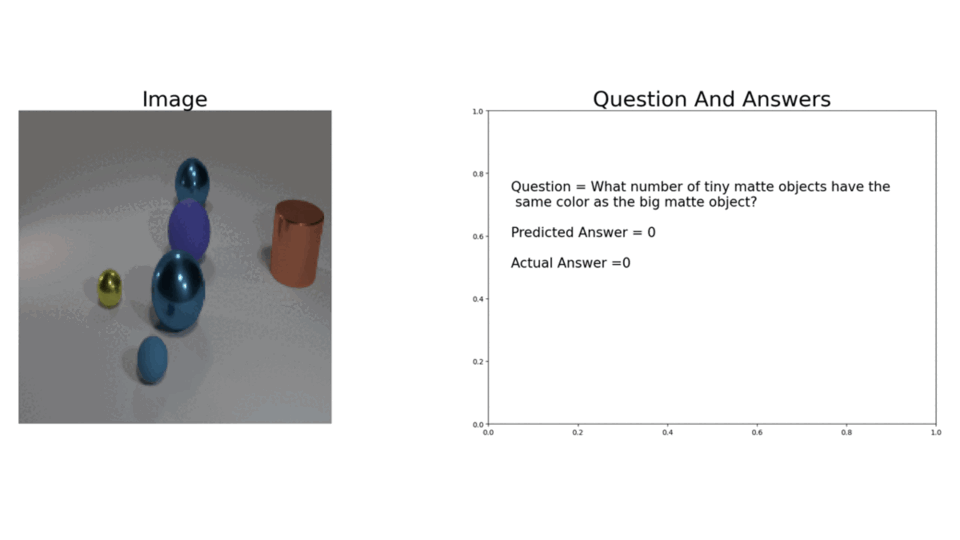 Individuals with visual impairments or limited vision often face challenges in inter-
preting images, particularly those found on the web. This is especially true for complex
images that require advanced reasoning for understanding. Despite these individuals
constituting about 8% of the population, there is still a notable lack of tools provid-
ing contextual explanations of visual data. Current solutions, such as screen mag-
nifiers, high-contrast software, screen readers, voice recognition software, adjustable
screen brightness, color adjustment software, Braille displays, text-to-speech software,
AI-powered image recognition tools, and optical character recognition software, are
available to assist visually impaired people. However, while AI-powered image recog-
nition tools give a general overview, they lack the capability to provide reasoning-
based contextual explanations. Our project seeks to address this shortfall by creating
a vision-language model that generates context-specific questions and relevant inter-
pretations of visualization. We utilized a Visual Question Generation (VQG) model
with a BLEU-1 score of 0.758092 and a BLEU-2 score of 0.579911, alongside a Visual
Question Answering (VQA) model with 48.05% accuracy in generating answers. By
combining these models, we developed a web application to gather feedback from visu-
ally impaired users. In our study involving 8 participants, all reported that the system
significantly aided them in better understanding images
Individuals with visual impairments or limited vision often face challenges in inter-
preting images, particularly those found on the web. This is especially true for complex
images that require advanced reasoning for understanding. Despite these individuals
constituting about 8% of the population, there is still a notable lack of tools provid-
ing contextual explanations of visual data. Current solutions, such as screen mag-
nifiers, high-contrast software, screen readers, voice recognition software, adjustable
screen brightness, color adjustment software, Braille displays, text-to-speech software,
AI-powered image recognition tools, and optical character recognition software, are
available to assist visually impaired people. However, while AI-powered image recog-
nition tools give a general overview, they lack the capability to provide reasoning-
based contextual explanations. Our project seeks to address this shortfall by creating
a vision-language model that generates context-specific questions and relevant inter-
pretations of visualization. We utilized a Visual Question Generation (VQG) model
with a BLEU-1 score of 0.758092 and a BLEU-2 score of 0.579911, alongside a Visual
Question Answering (VQA) model with 48.05% accuracy in generating answers. By
combining these models, we developed a web application to gather feedback from visu-
ally impaired users. In our study involving 8 participants, all reported that the system
significantly aided them in better understanding images
Demo of the survey for Contextual Visual Reasoning Project
Visual Light Communication
The goal of this project is to establish communication using visible red laser light to transmit data encoded as an 8-bit binary code, which will then be converted into 26 characters (alphabets) and 10 numbers. The transmitted data will be stored in a text file on the receiving end.
The project involves two main components: an integrated system comprising Arduino and Python to collect data and generate text files, and a communication system utilizing visible red laser light.
Communication System: The communication system utilizes visible red laser light as the medium for data transmission. The sender will encode the data in the form of an 8-bit binary code. The binary code is modulated onto the laser light to transmit it over a short distance to the receiver.
The receiver, equipped with a light sensor, will detect the modulated laser signal. A suitable circuit connected to the sensor will then demodulate the received signal, extracting the binary data from the light pulses. The binary data is then processed to convert it into human-readable characters, which will represent a combination of 26 alphabets (A-Z) and 10 numbers (0-9). This conversion will enable meaningful information to be transmitted through the laser communication.
Integrated Arduino and Python System: The communication system is integrated with an Arduino and Python system to manage data collection and text file creation. On the transmitting end, an Arduino board is utilized to interface with the communication hardware. The Arduino reads the data to be transmitted, converts it into the 8-bit binary code, and modulates it onto the visible red laser light. On the receiving end, another Arduino board is used in combination with a light sensor to detect the modulated laser light. The Arduino then demodulates the received binary data, preparing it for further processing. Python plays a crucial role in the data processing phase. The demodulated binary data is fed into a Python script that converts it into human-readable text. The script maps each 8-bit binary segment to a specific character, effectively translating the binary data into a sequence of 26 alphabets and 10 numbers.
Finally, the Python script generates a text file containing the received information in a readable format. This text file can then be accessed and interpreted by users, allowing them to comprehend the transmitted data.
Demo of Expert-Goggles (EG) prototype tools.
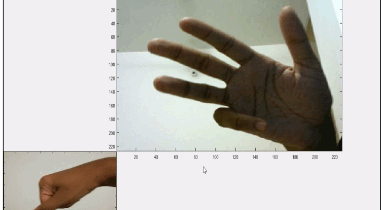
Bangla Sign Language Detection
Sign language is the best way of communication for the specialized people who lack the power of hear. Every country has a sign language of its own. Hence, it is not possible for deaf people living in Bangladesh to understand the sign language of other countries. This article represents a method of translating English (British) sign language to Bengali Sign Language using basic digital signal processing and machine learning techniques. In this study MATLAB has been used through every procedures made.

Pneumonia Detection from Chest X-ray
Pneumonia is one of the most common infectious diseases in the lungs especially attacked infant and elderly people which causing cough with phlegm or pus, fever, chills, difficulty breathing, fill lungs with pus, and sometimes leads to deaths in some case. In Bangladesh, pneumonia is responsible for around 28% of the deaths of children under five years of age. Around 50,000 children die of pneumonia every year because of not having proper medical doctors, especially in rural areas. But early detection can help to prevent this disease. Developing a device to detect pneumonia in a rapid and non-invasive way, which will be affordable for Bangladeshi people is our aim. Helping medical professionals to detect pneumonia early to facilitate the treatment of the patients is our motivation. That why an affordable, rapid detection model is designed. In our device, we used machine learning techniques using a non-invasive technique method by collecting x-ray images, spo2 level along with clinical symptoms that can help to detect pneumonia in absence of a doctor. Moreover, only an x-ray or only spo2 can not specify a pneumonia patient. But our model takes all the info and is gathered in machine learning model to detect the chance of having pneumonia with great accuracy with respect to other proposed models

Smart Attendence System
Students attendance have been considered as one of the crucial elements or issues that reflects the academic achievements and the performance contributed to any university compared to the traditional methods that impose time-consuming and inefficiency. Diverse automatic identification technologies have been more in vogue such as Radio Frequency Identification (RFID). RFID is a wireless technology, which uses to a purpose of identifying and tracking an object via radio waves to transfer data from an electronic tag, called RFID tag or label to send data to RFID reader. The project focuses on implementing an RFID based Attendance Management System (AMS) and also information service system for an academic domain by using RFID technology in addition to the programmable Logic Circuit (such as Arduino, NodeMCU), and web-based application. The proposed system aims to manage students’ attendance recording and provides the capabilities of tracking student absentee ,the proposed attendance and information system is time-effective and it reduces the documentation efforts as well as, it does not have any power consumption. The presence by using RFID is faster than the traditional way and implementation of the internet system of things (IoT) and data storage clouds enables the system to run in real time with accurate data.